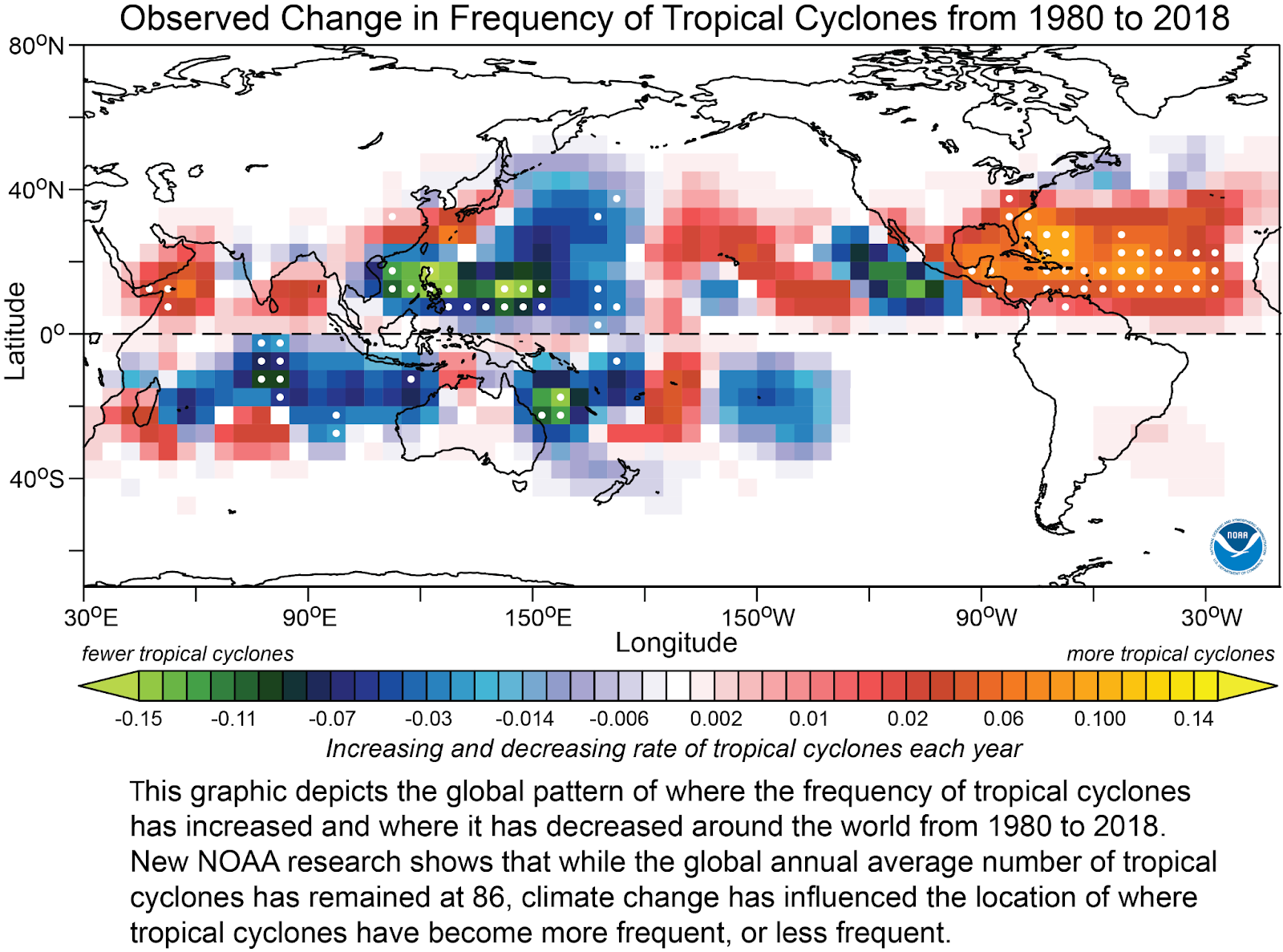As climate change expands the tropical climate regions, hurricane-prone regions are moving towards the North and South Poles. Cities that were not previously affected by hurricanes are being put in danger. Understanding how hurricanes will move in response to climate change is important to be able to prepare for future hurricane disasters. As common locations of hurricanes change, each city predicted to be hit by more hurricane damage will need to bolster its resilience infrastructure.
Where and Why are Hurricanes Shifting?
Hurricanes are gravitating towards the poles, moving north in the Northern Hemisphere and south in the Southern Hemisphere. This has been directly tied to the growth of the tropics region due to climate change. The high-temperature and heavy rainfall area of the tropics wraps around the middle of the Earth. But as the world warms, temperature differences between the equator and poles will decrease, and the fast-moving jet streams that normally block the formation of hurricanes will falter.
Studies dating back to 2014 have indicated that hurricanes are shifting poleward at a speed of 35 miles a decade. Hurricanes in the Pacific Ocean account for 50 percent of cyclone activity, so poleward trends within that area have a large impact on these patterns. Interestingly, this shift has not yet been seen in the North Atlantic, which accounts for only 14 percent of hurricanes despite the ocean’s massive size.

Source: https://www.noaa.gov/news/study-climate-change-has-been-influencing-where-tropical-cyclones-rage
Impacts of Shifting Hurricane Patterns
Intense hurricanes are a big issue for coastal communities. Shifting geographical ranges of hurricanes will place populated coastal areas in the path of severe storms that they may not have built up the infrastructure to defend against. As a result of climate change, hurricanes are more intense (more 4 or 5 category hurricanes) than before and have more rain, especially in the Northeast Pacific and the Southwest Pacific. Places north of the tropics in the Northern Hemisphere and south of the tropics in the Southern Hemisphere like Maine, Southern Canada, and South Africa will likely be put in danger.
Here are some recent examples that have happened close to the Northern and Southern Poles where a hurricane was unusually severe:
- Hurricane Irene (2011): This large, destructive and powerful tropical hurricane hit as far north as Connecticut, Vermont, Pennsylvania, and New York.
- Hurricane Cook (2017): In New Zealand, Hurricane Cook dropped 11.8 inches of rain on April 10th, 2017 and killed one person.
- In 2018, there was an extremely rare subtropical cyclone off the coast of Chile. This far south, temperatures in Chile are normally too cold for tropical cyclone development.
Building Infrastructure Resiliency
Some communities have responded to patterns of increased hurricane frequency and intensity with efforts to increase their resiliency. For example:
- Connecticut: In 2021, a record-breaking 12 hurricanes hit Connecticut. In response, the Connecticut government reinforced natural buffering systems (such as grasses and trees with complex root systems) to prevent flooding and aid drainage, updated water supply treatment infrastructure to prevent contamination from flooding, and inspected the safety of bridges.
- Pennsylvania: After Hurricane Ida, Governor Tom Wolf announced that Pennsylvania will be given $5 million from Biden’s Bipartisan Infrastructure Law to support flood mitigation. This includes support for nonstructural retrofitting of existing buildings, structure elevation, and dry floodproofing.
Conclusion
Shifting hurricane patterns will put millions of residents in danger of flood and wind damage that they may not be prepared for. Increased awareness of this issue and investments in infrastructure resiliency will help, but hurricanes are only one of many environmental and weather-related risks emerging in communities as a result of climate change. Read in our blog about other poleward shifts due to climate change, like the movement of native plant patterns.